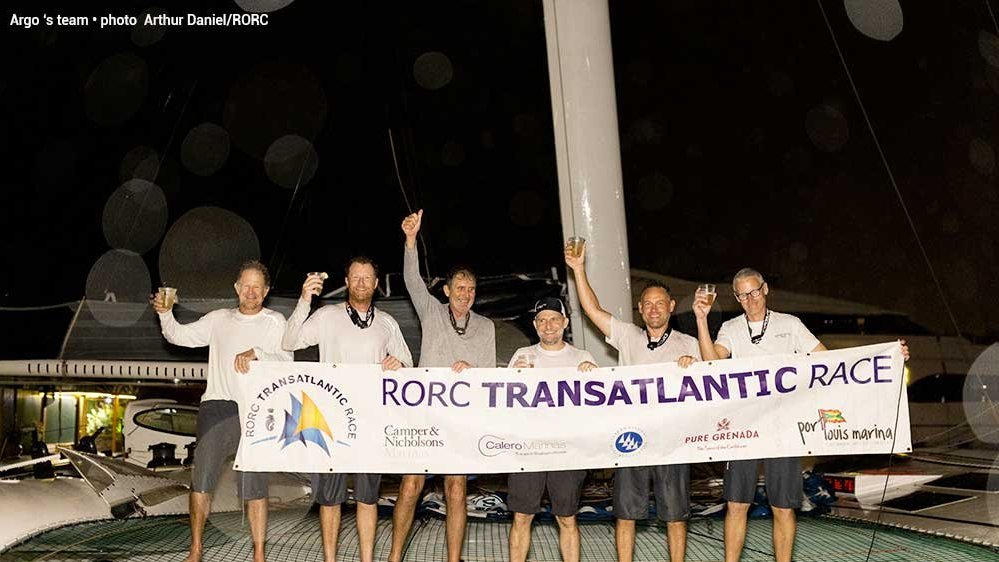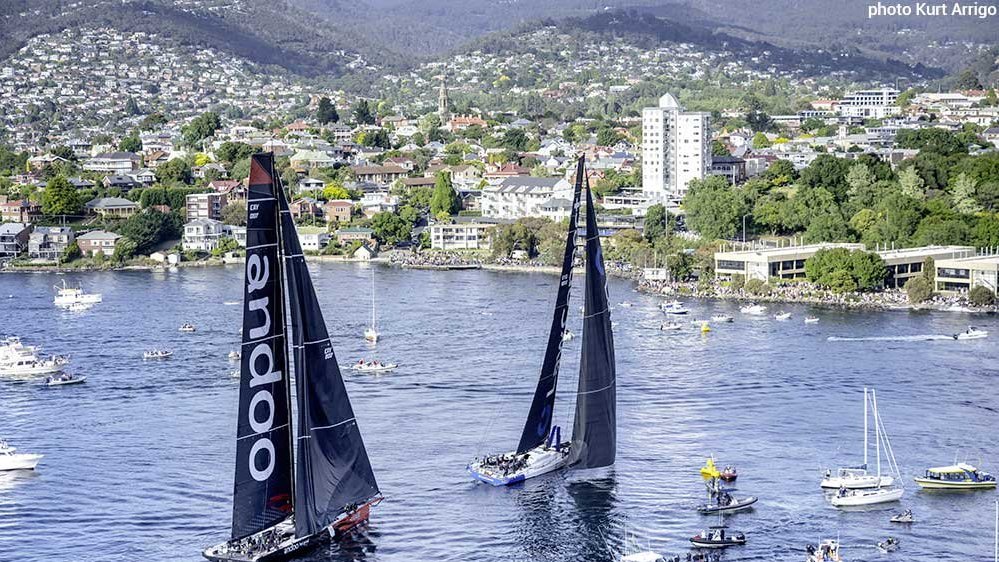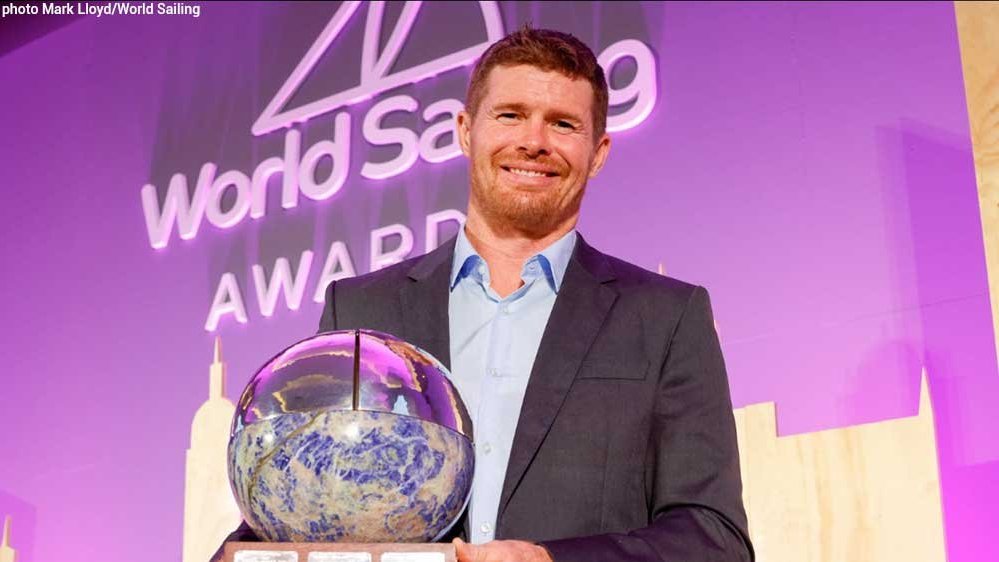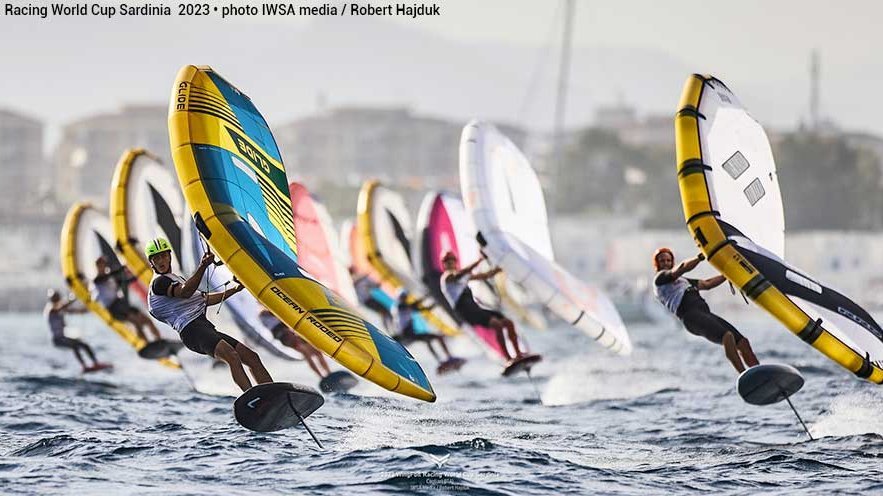
Jules Verne Trophy
Franck Cammas : "we capsized in the space of ten seconds"
"Groupama 3 is salvageable, even though the port float is highly damaged"
Monday 18 February 2008 –
All the versions of this article: [English] [français]

At 2343 UT on Sunday night, the giant trimaran turned over 80 miles to the East of the New Zealand town of Dunedin (South Island), the crew having gybed two hours earlier in a thirty knot SW’ly breeze on big seas. Groupama 3 had around a day’s lead over the round the world reference time set by Orange II and had begun its entry into the Pacific Ocean over the weekend… The crew was unable to do anything to prevent their capsize and was very rapidly picked up by the New Zealand rescue services, which rushed three helicopters onto the zone. Franck Cammas looks back at how the accident occurred.
“This Monday morning (late Sunday night UT), we gybed very close to the New Zealand coast by adopting a tack, which was designed to distance us from the worst of the low that was ahead of us. We set off on starboard tack, due East with 25-30 knots of wind: we were making good speed Speed #speedsailing at over thirty knots on seas, which had calmed down. At the helm Franck Proffit was on watch with Fred Le Peutrec and Jan Dekker. The leeward float broke just aft of the forward beam. There was a very quick chain reaction and within ten seconds the float had taken the beam with it and that too broke.
I was on rest watch up forward, when I heard the shouts on deck: “Gybe!” and I felt the boat heel over… I had reached the hood when everyone starting hurrying to come inside: we capsized in the space of ten seconds. It was broad daylight, which enabled us to see what had happened.
There was nothing left to leeward and Franck immediately tried to gybe, but the manœuvre became impossible as the float instantly filled with water: without any support downwind, Groupama 3 capsized relatively slowly onto the side with the flooded, broken float to port. The crew who were on deck, since the standby watch immediately went up top to make an emergency gybe, all had time to go below, Franck last. It was necessary for the whole crew to be inside the boat as it turned over so as to limit the risk…
We immediately saw the damage and straightaway alerted our team on shore of the accident and began to prepare for the repatriation over the coming days. The New Zealand rescue services, alerted by our distress beacon being set off, were on the scene four hours later: we saw three helicopters, which did a fantastic job airlifting us off. Everything was performed in an orderly fashion and at a quick pace since each helicopter was able to take four people. The rescue was pretty tough with six metre waves. The helicopter couldn’t take us whilst we were on the boat so we had to jump into the water to track down the diver as the trimaran was drifting at three knots. Our rescuers were very fast as we were all onboard helicopters within an hour.
Right now we are at Dunedin, where we’ve been very warmly welcomed by the local population. We are relieved that nobody is injured as a capsize on this size boat, could really be dangerous. The crew reacted very well: everyone kept a clear head.
We have nothing to reproach ourselves for since this breakage has nothing at all to do with mishandling or a failed manœuvre… Groupama 3 had been suffering violent impacting in beam seas in the Indian Ocean for the past week. The source of the breakage may stem from the previous night where we had beam seas with forty knot winds: there was some particularly violent impacting, especially on the leeward float to port in fact… This could have damaged the float without us seeing and two hours of sailing may have been enough to break it in conditions, which were becoming mild again, without the possibility to react.
I was down below on rest watch and I didn’t even hear the cracking. My first reaction was that the boat had dismasted when I heard Franck’s cries on deck, who was trying to make an emergency manœuvre with the trimaran heeled over. Sébastien and I even had time to get as far as the hood, but Franck told us to go back below when the boat began to heel over… Fortunately it wasn’t overly violent, but it’s always quick!
Groupama 3 is salvageable, even though the port float is highly damaged: we’ll need the weather forecast to become milder as there were six to seven metre waves at the time. Conditions will improve and we’ll go to the zone with a diver to free as many of the parts as possible, which are loading down the platform, prior to righting the boat and bringing her back to the coast, which is only 80 miles away. It’s feasible! Dunedin is the town where the helicopters brought us back to, which houses 150,000 inhabitants who welcomed us with open arms. We were stood there with our hands in our pockets as all we had was our sailing clothes. We’re going to arrange for the boat to be picked up from tomorrow morning.
It’s hard to take it all in! We’ve sailed on this boat a lot and some of the crew were surprised at the impact she was absorbing, especially in the Indian Ocean, but we were beginning the ‘simplest’ section in what were improving conditions and we had a 24 hour lead…
We were very lucky in our misfortune: if it had happened 40 hours earlier, it would have been at 55° South with the water at 3°C! It was the only point in a circumnavigation of the globe, other than Cape Verde, where we could pass within fifty miles of a coast… We were pretty lucky!
Groupama 3 is a fantastic boat! We’re massively disappointed not so much on a sporting level as we sailed a great course, but rather on an equipment level… and it’s also a relief to have minimised the risks as, given the state of the boat, it’s the best place this could have happened! These boats are well laid out but the source of the breakage is very limited across a metre, and the way the sequence of damage occurred was very fast. The breakage was located on the port float between the foil Foil #foil housing and the forward beam: with the twisting, the float was bent 90° out of line and it therefore pulled out the forward beam and then the aft one.
It all happened very quickly: had one piece of carbon remained to link the two parts then it would have been enough for us to intervene. The reasons for this are that despite the watch’s very rapid reaction on deck, nothing could be done! I think the breakage is due to the excessive fatigue of the float, which was previously to windward in breaking seas: it’s probably the result of the impacting that this section yielded. The design is not in question, there’s probably just an extra layer of carbon that needs adding… The carbon has a ‘memory’ and as a result of the repeated impacting, it is possible that there was a weakness and then a crack... You can’t have any doubts when you’re sailing on a boat like this. There were no symptoms beforehand. It was a zone, which had already been strengthened last winter. There is nothing to reproach anyone for. We are not despondent: we are all keen to continue hunting down this round the world record Record #sailingrecord …
I don’t feel that we’ve exceeded the boundaries; we remained in the sectors of reasonable piloting. I remain frustrated about not having been able to exploit the boat at 100% as we didn’t have favourable conditions. We’d gone through the worst of it and, in the Pacific, we would have encountered a longer and less trying swell for the boat.
I won’t see Cape Horn…”
Questioned on the subject of the construction of Groupama 3, her skipper replied: “You mustn’t put Nomex everywhere: we’re not looking for stiffness, but rather lightness as this too is proof of safety. We are very different from 60 footers and, in relation to Geronimo, we had less Nomex and more bulkheads… Our philosophy was a good one!”
“Groupama 3 was 80 miles from the coast and there’s a good chance we’ll be able to get it back to shore. We’ll have to right it before we can tow her in, but the first thing we need to do is to clear everything that’s under her (mast, float…), which is currently damaging the platform. We’ll also have to find a cargo ship to bring her back to Europe. The crew is very happy to have sailed aboard her and will do everything they can to bring her back home as quickly as possible. Groupama 3 has provided us with some superb sensations for the past two years and in this instance we were still within the timing to circle the globe. It’s the fastest multihull in the world over this type of course! We’d really like to come back and vie for the Trophy again next winter if possible. There’s some work ahead, but we’ll have to first assess the cause of the breakage" concluded Franck Cammas.
View online : Press info Welcome Onboard / www.cammas-groupama.com (translation K.Jennings)
Le tout pour le tour
- Trophée Jules Verne : 50j 16h 20’ (Orange II en 2005)
- Ouessant-équateur : 6j 6h 24’ (Groupama 3 en 2008)
- Ouessant-cap des Aiguilles : 13j 08h 47’ (Groupama 3-2008)
- Ouessant-cap Leeuwin : 21j 02h 00’ (Groupama 3-2008)
- Ouessant-Tasmanie : 22j 20h 53’ (Groupama 3-2008)
Les trois quarts d’un tour
![]() L’équipage de Groupama 3
L’équipage de Groupama 3
![]() Franck Cammas : skipper & chef de quart 1
Franck Cammas : skipper & chef de quart 1
![]() Franck Proffit : chef de quart 2
Franck Proffit : chef de quart 2
![]() Steve Ravussin : chef de quart 3
Steve Ravussin : chef de quart 3
![]() Yves Parlier : navigateur
Yves Parlier : navigateur
![]() Sébastien Audigane : 2ème barreur
Sébastien Audigane : 2ème barreur
![]() Loïc Le Mignon : 2ème barreur
Loïc Le Mignon : 2ème barreur
![]() Frédéric Le Peutrec : 2ème barreur
Frédéric Le Peutrec : 2ème barreur
![]() Jan Dekker : équipier d’avant
Jan Dekker : équipier d’avant
![]() Ronan Le Goff : équipier d’avant
Ronan Le Goff : équipier d’avant
![]() Jacques Caraës : équipier d’avant
Jacques Caraës : équipier d’avant
Also in this section
Jules Verne Trophy : Cammas and crew around the world
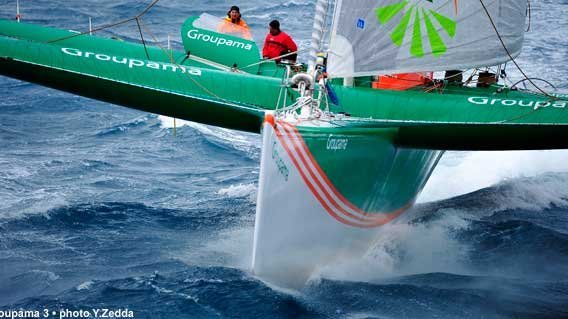
North Atlantic Record : Bruno Peyron shatters the North Atlantic record

Asian Record Circuit : Ellen MacArthur : "It has been an incredible story"

San Francisco-Yokohama : Larry Rosenfeld and Kazuhiro Nishimura aboard Geronimo
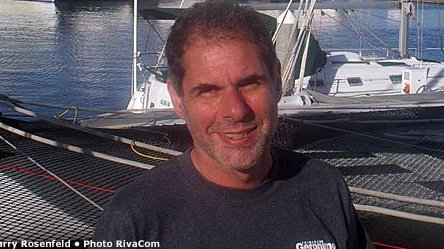
 Sea, Sail & Surf news
Sea, Sail & Surf news

